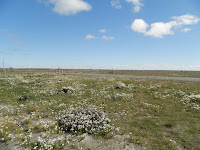 Data extracted from the DG AGRI
statistics on the distribution of payments in the financial year 2015 show that
just 131,000 farm holdings received just less than 33% of the entire national
envelopes for direct payments and, indeed, almost 10% of the entire EU budget.
Data extracted from the DG AGRI
statistics on the distribution of payments in the financial year 2015 show that
just 131,000 farm holdings received just less than 33% of the entire national
envelopes for direct payments and, indeed, almost 10% of the entire EU budget.
One wonders just what services these
farms are providing to the taxpayer that justifies giving them almost 10% of
the entire EU budget. The €13.7 billion going to this small number of farm
holdings is far greater than the entire EU budget for security and citizenship
of €2.0 billion, the entire budget for Global Europe of €7.9 billion, and even
the entire EU administration budget which attracts so much unfavourable comment
of €9.0 billion in that year.
These generously-supported farms (all
those receiving more than €50,000 per annum) accounted for just under 2% (1.8%)
of all beneficiaries of direct payments and just over 1% (1.2%) of all farm
holdings in the EU.
Ik vrees dat de cijfers zelfs nog wat geflateerd zijn omdat er boeren zijn met meerdere bedrijven. En deels worden de gelden gedeeld met grondeigenaren, maar misschien zijn er daar nog wel minder van. Kortom dit zou in de toekomst anders moeten. Waarbij een bovengrens aan de betalingen per bedrijf geen oplossing zijn. Het moet omgezet naar maatschappelijke (natuur) diensten.
Geen opmerkingen:
Een reactie posten